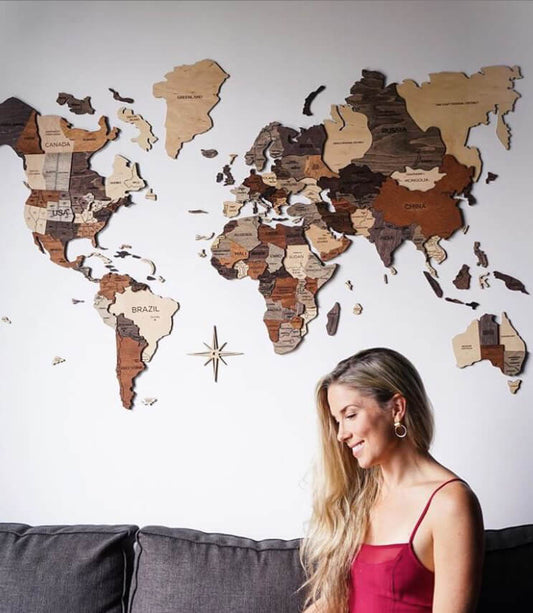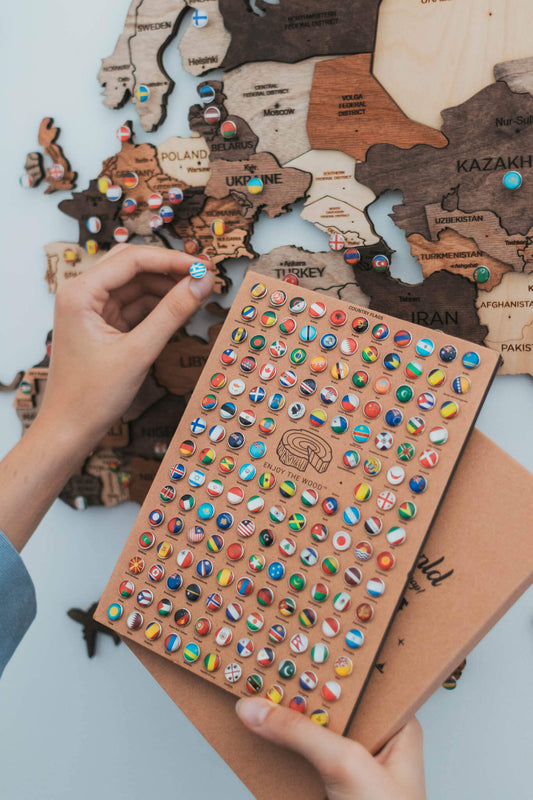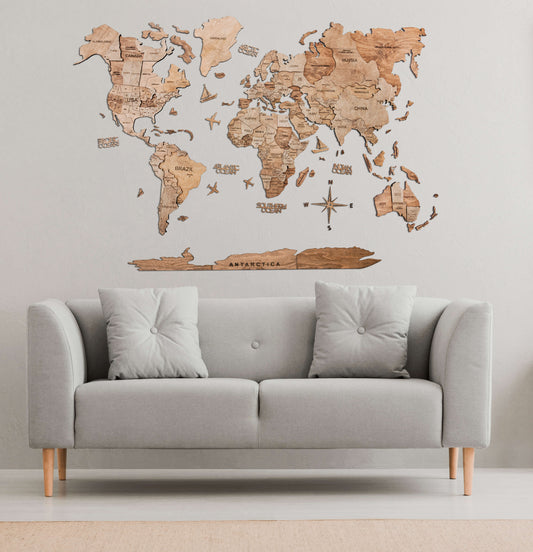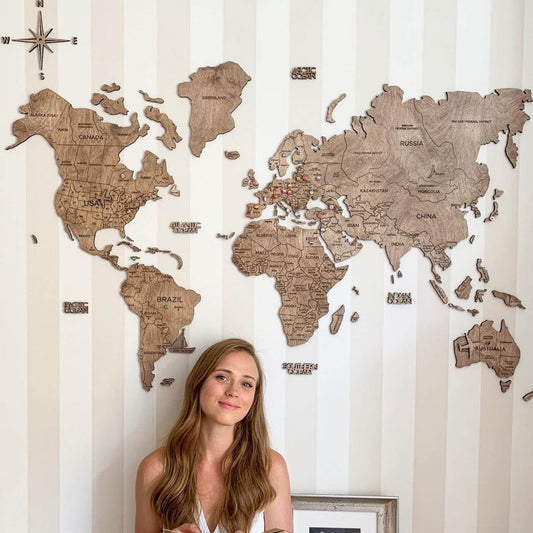Introduction
Maps have been used throughout history to navigate the physical world, but they also have significant cultural and artistic value. World maps, in particular, have been used as symbols of power, exploration, and cultural identity. In art and design, maps have been incorporated into various forms, from traditional cartography to Wooden World Maps and graphic design.
By understanding the symbolism and cultural significance of world maps, we can gain a deeper appreciation for their artistic and cultural value. World maps have played an important role in shaping our understanding of the world and our place within it, and this blog post aims to explore that significance in depth.

Historical Context
Early world maps
Maps have been used for thousands of years to navigate the world and document geographic information. Early maps were crude and inaccurate, but they still provided a representation of the known world at the time. One of the earliest available world maps is the Babylonian Map of the World, which dates back to the 6th century BCE. This map was a clay tablet that depicted the world as a flat disk surrounded by water.
The rise of cartography
Over time, cartography evolved, and world maps became more accurate and detailed. In the 16th century, the Age of Exploration led to a surge in world map-making as explorers traveled the world and documented new territories. Maps were used for navigation, but they were also symbols of power, representing the extent of a nation's influence and territory.
Mapping the world in modern times
In modern times, world maps have become more standardized and accurate, thanks to advances in technology and surveying methods. Maps are used for everything from navigation to urban planning, and they play an essential role in understanding the world around us.

Symbolism in World Maps
World maps are not just representations of geographic information; they also contain symbolic elements that can convey cultural and political meaning. Here are some examples of the symbolism found in world maps:
Shapes and colors
The shapes and colors used in world maps can convey different meanings. For example, the use of different colors can represent different geographical features, such as blue for water or green for forests. Shapes can also be used to represent different regions, such as the rectangular shape of North America or the triangular shape of Africa.
Cultural symbols and icons
World maps can also contain cultural symbols and icons that represent different regions or historical events. For example, a map of the Middle East may contain symbols representing different religions or historical sites, such as the Dome of the Rock in Jerusalem.

Cultural Significance of World Maps
World maps have played a significant role in shaping cultural identity and political power throughout history. Here are some examples of the cultural significance of world maps:
The religious and spiritual significance
World maps have been used as symbols of religious and spiritual significance. For example, in Christianity, maps were used to depict the location of holy sites, such as the location of the Garden of Eden. In Hinduism, maps were used to represent the universe and the cycle of reincarnation.
Political and economic significance
World maps have also played a role in shaping political and economic power. Maps were used to establish national boundaries and determine territorial control. The location and size of countries on a map can also represent their relative political and economic power.
National identity and pride
World maps can also represent national identity and pride. Maps are often used as symbols of national unity and cultural heritage. For example, a map of a country's historical landmarks can represent its rich cultural heritage.

World Maps in Art
World maps have been incorporated into art in various forms throughout history. Here are some examples of how world maps have been used in art:
World maps in traditional art
World maps have been used as subjects for traditional art, such as painting and sculpture. These artworks often depict maps in a decorative or symbolic way, rather than as accurate cartographic representations. For example, a map might be used as a background for a portrait, or the shapes and colors of a map might be used to create an abstract image. Some examples of traditional art that incorporate world maps include the Renaissance fresco "The School of Athens" by Raphael, and the "Mappa Mundi" created in the 13th century.
Contemporary world maps in art
Contemporary artists have also incorporated world maps into their artwork, often using maps to explore political or social issues. For example, an artist might create a map that highlights social inequality or environmental issues. Maps can also be used to create interactive installations that encourage viewers to explore and engage with the artwork. Some examples of contemporary art that incorporate world maps include "The World is Not Flat" by Paula Scher, and "The Map Room" by Sarah Sze.
Typical map-themed items:
- World map posters or prints
- Globes on stands
- Fridge magnets
- Wooden World Map wall art
- Phone cases
- Jewelry
- Mugs

World Maps in Design
World maps have also been incorporated into design in various ways. Here are some examples of how world maps have been used in different areas of design:
World maps in graphic design
World maps are commonly used in graphic design, often as a way to represent global or international themes. Maps can be used as backgrounds or incorporated into logos or other branding materials. They can also be used to create infographics or data visualizations that represent complex information in a clear and concise way. Some examples of world maps in graphic design include the "We Are One" logo for the 2014 World Cup, and the "Global Goals" campaign by the United Nations.
World maps in interior design
Maps have also been used in interior design, often as a way to create a global or travel-themed decor. One of the most popular ways is to have a 3D Wooden World Map as your wall art. You can choose from many color and size variants depending on your home’s color scheme and theme.
A wooden map will bring calm and adventurous vibes to your home, not to mention, it’s probably the most interesting way to display your wanderlust.
Conclusion
World maps have been used in art and design for centuries and continue to be a popular and versatile symbol in these fields. Maps can be seen in traditional works, contemporary installations, and street art. They can be used to explore a range of themes and issues, from political and social issues to global and international themes. World maps in design are used in graphic design, interior design, and fashion design, and can be used to create a global or international theme in a wide range of products and applications.
Maps as your wall art can be used to showcase your wanderlust and create a conversation piece in your home.
Collections:





